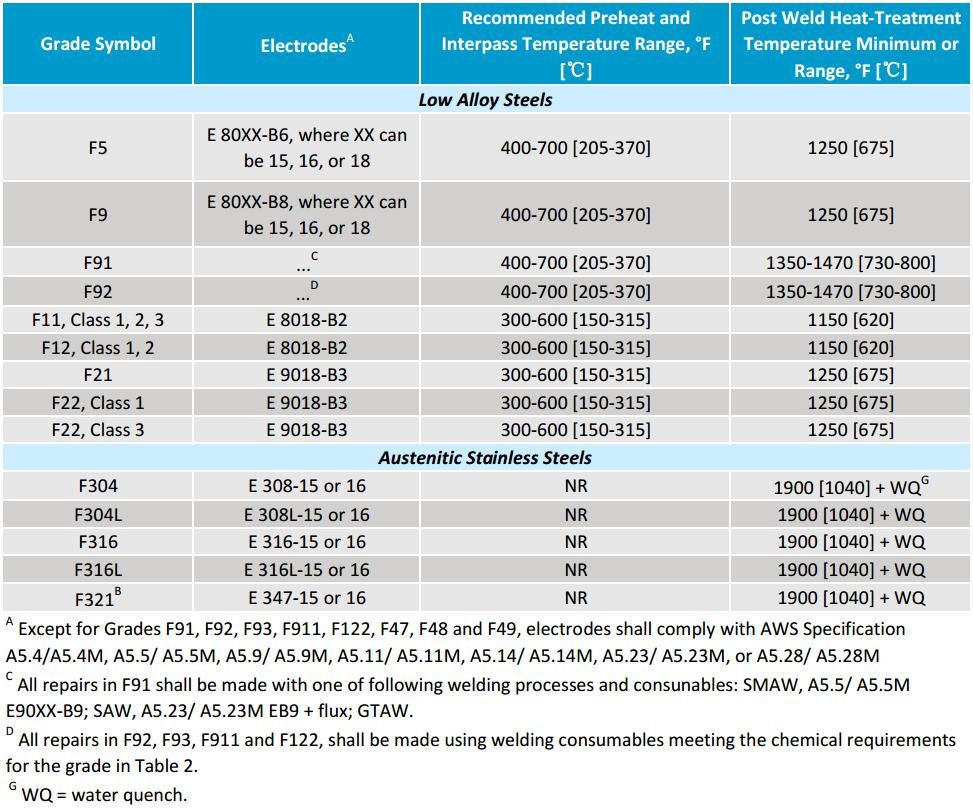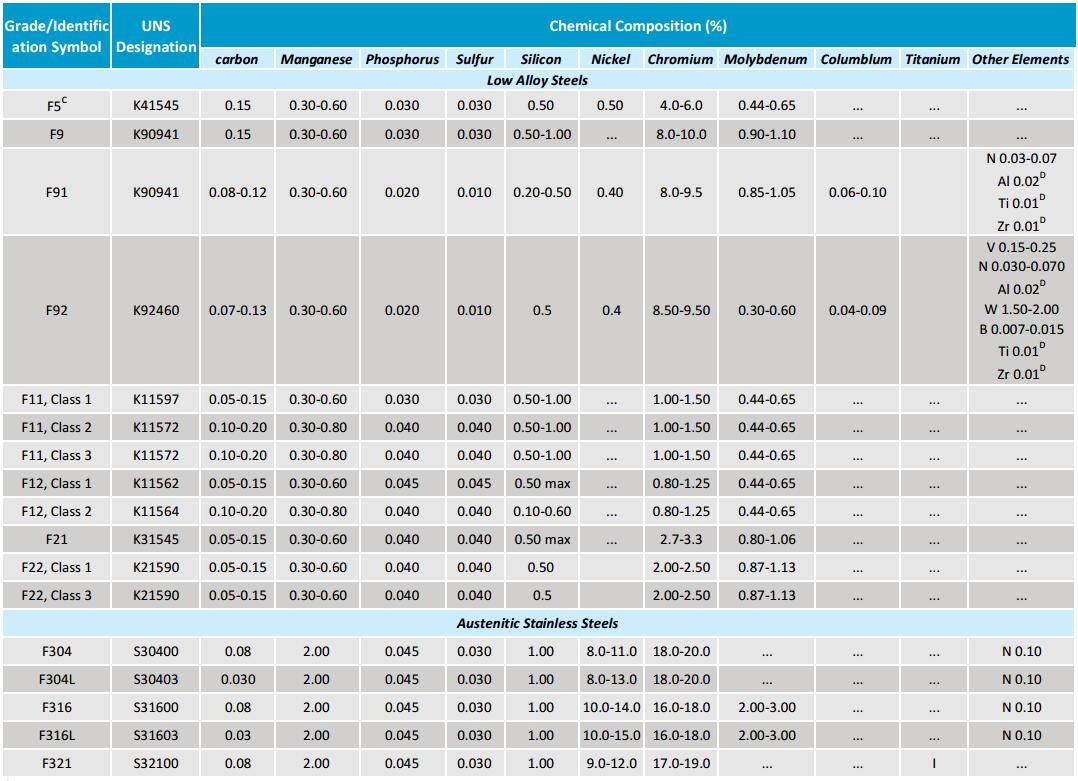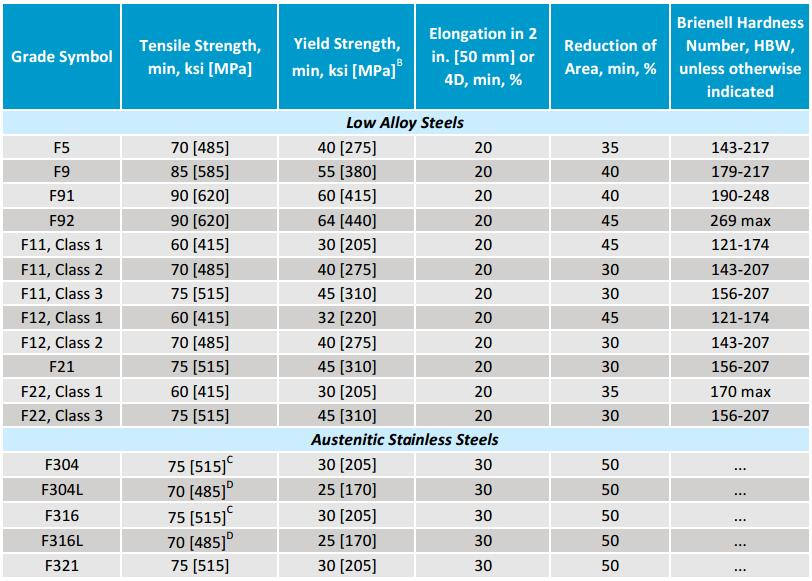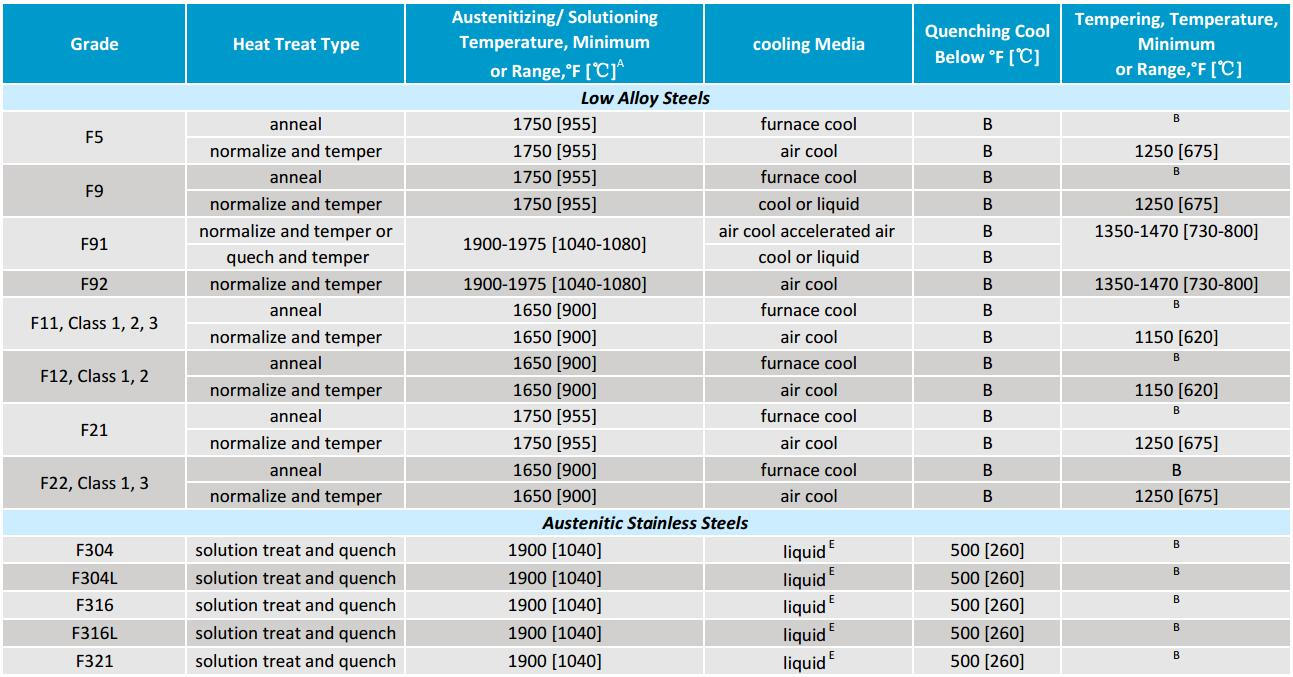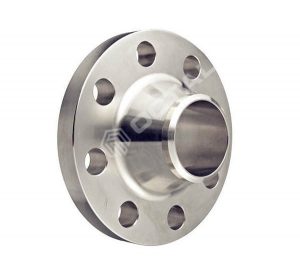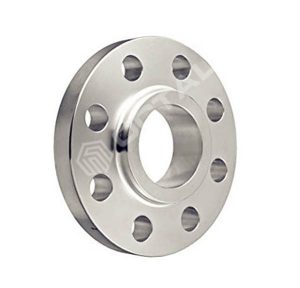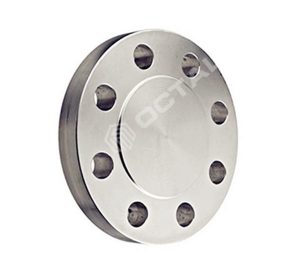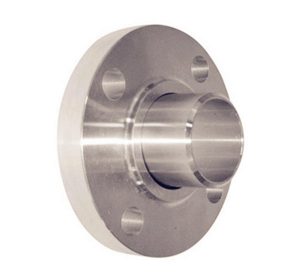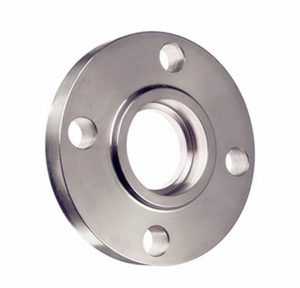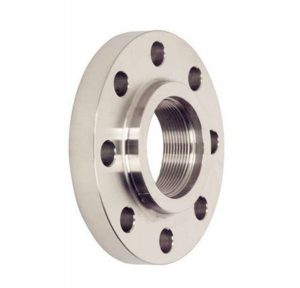ASTM A182 F11, F22, F304, F316 (Alloy and Stainless Flange) Specification
ASTM A182 standard specification is for forged and rolled alloy and stainless steel pipe flanges, fittings, valves and parts for high temperature service. Common grades of alloy steel is Grade F5, F9, F11, F22, stainless steel F304/L and F316/L.
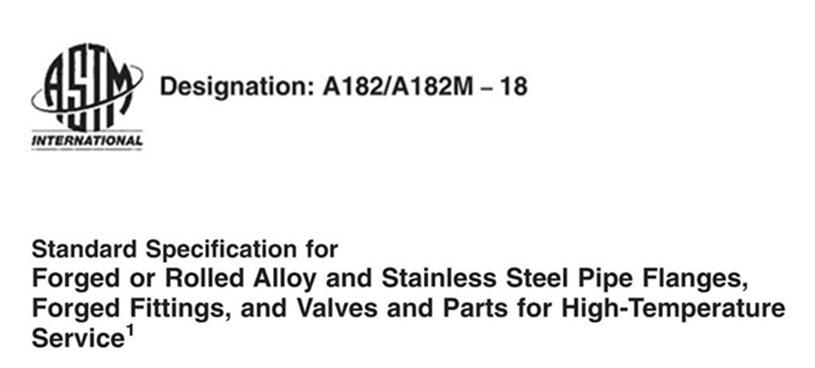
Standard Scope
The standard applies to forged low alloy steel and stainless steel pipe parts for use in pressure systems. These include flanges, fittings, valves and similar parts that meet specified size or size standards. And it includes several grades of low carbon alloy steel and ferritic, martensitic, austenitic and ferritic-austenitic stainless steels. So it should be selected according to the design and use requirements.
When additional tests or inspections are required, supplementary requirements are provided for use. When the purchaser has specified them individually in the order, and it can be used.
Common Grades
Alloy grade: ASTM A182 F5, F9, F91, F92, F11, F12, F21, F22
Stainless steel grade: ASTM A182 F304, F304L, F316, F316L
Alloy Flange: ASTM A182 F11, F22
ASTM F11, F22 is the most use alloy steel grade in ASTM A182.
Stainless Steel Flange: ASTM A182 F316
ASTM A182 F316 is most used for stainless steel flange, includes weld neck flange, slip on flange, blind flange, socket weld flange and etc.
Either alloy steel or stainless steel flange dimensions available for the OD up to 48 inch, class pressure from 150# to 2500#.
Units
This specification is expressed in inch-pounds and SI units.
Manufacture Types
For Low Alloy Ferritic Steels
Low alloy ferritic steels should be smelted in one of the following methods:
a. Open hearth furnaces
b. Electric furnaces
c. Basis -oxygen process (with the option of separate degassing and refining processes).
For Stainless Steel
Stainless steel should be smelted in one of the following ways:
a. Electric furnace (with separate deoxidation and refining (optional))
b. Vacuum furnace
c. One of the above, followed by vacuum or electroslag self-consumption remelting.
The discard should be removed sufficiently, so as to ensure the elimination of harmful shrinkage and excessive segregation.
Chemical Composition
Chemical heat analysis shall be performed and consistent with the chemical composition requirements of Table 1.
Grades that add lead, selenium or other elements to make the material easier machined, it should not be used.
It is not permissible to add any element that exceeds the corresponding material grade listed in Table 2 for the raw materials produced in accordance with a certain standard.
Except for nitrogen in stainless steel, the ordered grade shall not contain unspecified elements to the extent that the content meets the requirements of another grade, which have the specified element with the minimum required content.
Table 1:
C: The present grade F 5a (0.25 max carbon) previous to 1995 eas assigned the identification symbol F 5. Identification symbol F 5 in 1955 was assigned to the 0.15 max carbon grade to be consistent with ASTM soecification for other products such as pipe, tubing, bolting, welding fittings, and the like.
D: Applies to both heat and product analysises.
I: Grade F 321 shall have a titanium content of not less than five times the carbon content and not more than 0.70%.
Mechanical Properties
For the grade ordered as listed in Table 2, the mechanical properties of the material shall comply with the requirements.
Table 2:
C: For sections over 5 in. [130 mm] in thickness, the minimum tensile strength shall be 70 ksi [485 MPa].
D: For sections over 5 in. [130 mm] in thickness, the minimum tensile strength shall be 65 ksi [450 MPa].
Tension Test
For low alloy steel, ferritic and martensitic stainless steel, one tension test shall be performed for each heat in each heat treatment charge.
When the heat treating cycle are the same and the furnace is controlled within ±25°F[±14℃]. And it is equipped with a recording pyrometer, so as to obtain a complete heat treatment record. However, only one tensile test is performed for each heat of each forging type and section size, rather than the per heating in each heat treatment charge.
Retreatment
If the results of the mechanical properties test do not meet the specified requirements, and the forgings may be performed heat treatment again. Meanwhile the mechanical properties test should comply with requirement.
Nondestructive Test Requirements
For hollow forgings of grades F91, F92, F122 and F911, greater than or equal to NPS 4 (DIN 100). The inner surface of which cannot be inspected by magnetic particle or liquid penetration, the ultrasonic inspection shall be carried out in accordance with A388 / A388M.
If the inner surface is accessible, it shall be examined by the magnetic particle in accordance with regulation A275/A275M, or by the penetration test according to test method E165.
Main point of Manufacture
The material should be forged as close to the actual specified shape and size as possible.
Elbows, U-bends, tees, connecting tees and any type of flange should not be processed directly from bars.
Cylindrical shaped parts can be machined using forged or rolled solution annealed austenitic stainless steel without the need for additional thermal processing.
Cylindrical shaped low-alloy, martensite, ferrite and ferrite-austenitic stainless steel parts that less than or equal to NPS-4 [DN 100], may be machined using forged or rolled bars without additional hot processing.
Heat Treatment
Heat Treatment for Forgings
After hot working, and the forgings shall be cooled to a temperature less than 1000 °F [538 ℃] before heat treatment as specified in Heat treatment Table 3.
Table 3:
A: Minimum unless temperature range is listed
B: Not applicable
E: Forged or rolled bar meeting the requirements of 7.5 shall be liquid quenched or rapid-cooled by other means in accordance with Specification A484/ A484M
Low-alloy steels, ferritic and martensitic stainless steels
Low-alloy steels, ferritic and martensitic stainless steels shall be heat-treated in accordance with table 3. When more than one heat treatment is listed (optional) for a grade in table 3, any one of these is acceptable. The choice of heat treatment should be determined by the manufacturer, unless otherwise specified in the order.
Liquid Quenching
Except for F1, F2 and F3 in 3.2.2, if the temperature of each grade in Table 3 is used with the consent of purchaser. So the liquid should be allowed to quench, then tempered.
Marking
Parts that are liquid quenched and tempered, and shall be marked with the letter ''QT''.
Grades F1, F2 and F12
In addition, grades F1, F2 and F12, Class 1 and 2 can be done a heat treatment with a minimum temperature of 1200°F, (650℃) after final cold or hot forming.
Austenitic and ferritic-austenitic stainless steels
Austenitic and ferritic-austenitic stainless steels shall be heat treated and liquid quenched in accordance with Table 3.
Time for Heat Treatment
Heat treatment of forgings can be carried out before machining.
Forged or Rolled Bar
Forged or rolled austenitic stainless steel rods for cylindrical shaped parts as specified in mechanical properties requirement. And the parts machined from bar without heat treatment after processing. It shall comply with annealing and quenching or rapid cooling requirements of A484 / A484M or this specification, and also allows for subsequent light cold drawing and straightening.
Surface Finish, Appearance and Corrosion Protection
Forgings and finished parts shall be free of scale and machined burrs that may interfere with installation, and other harmful defects as referred to in this standard. They shall have good processing quality, and the roughness of machined surfaces (except for special requirements) shall not exceed 250AA (arithmetic mean).
Welding Repair Requirements
